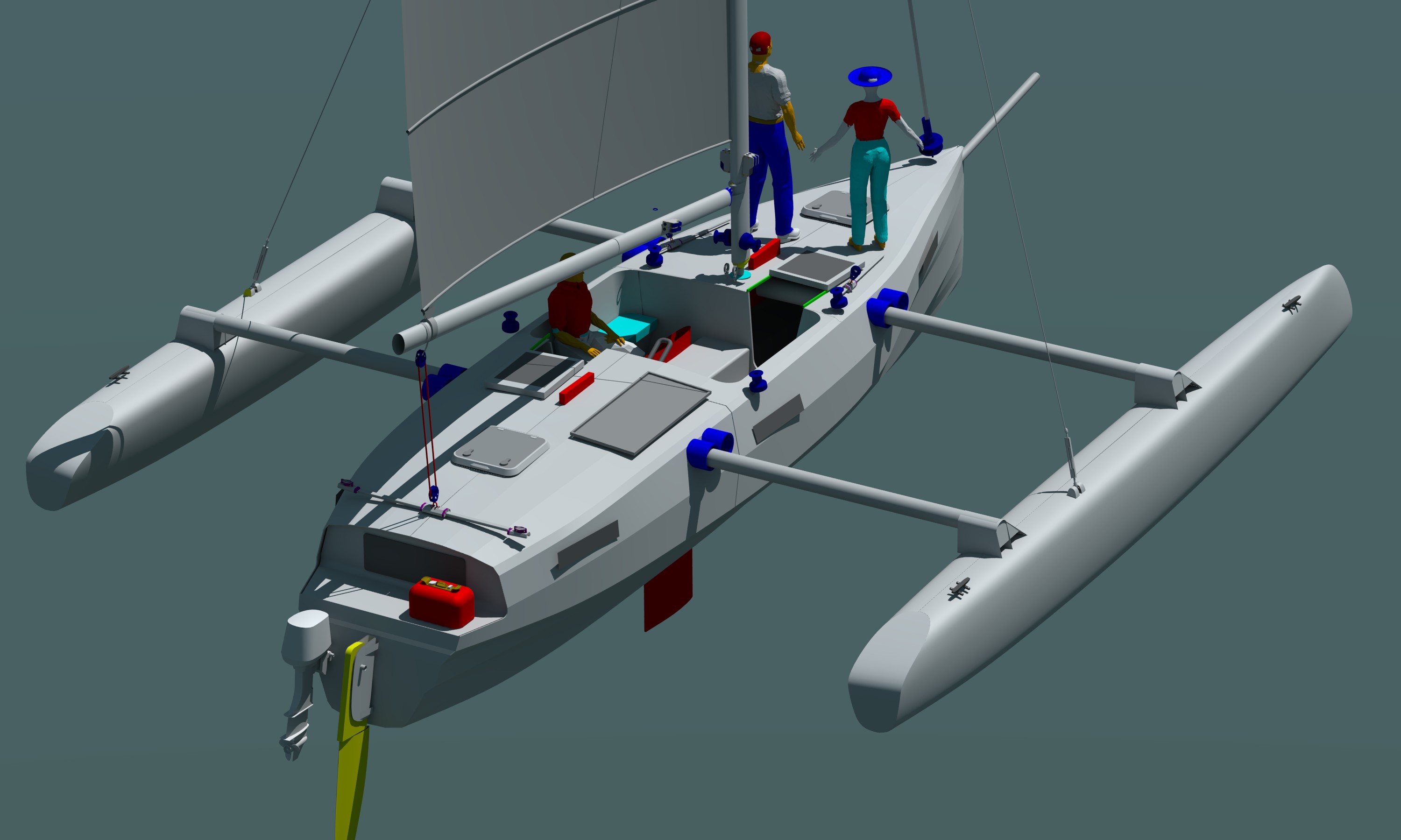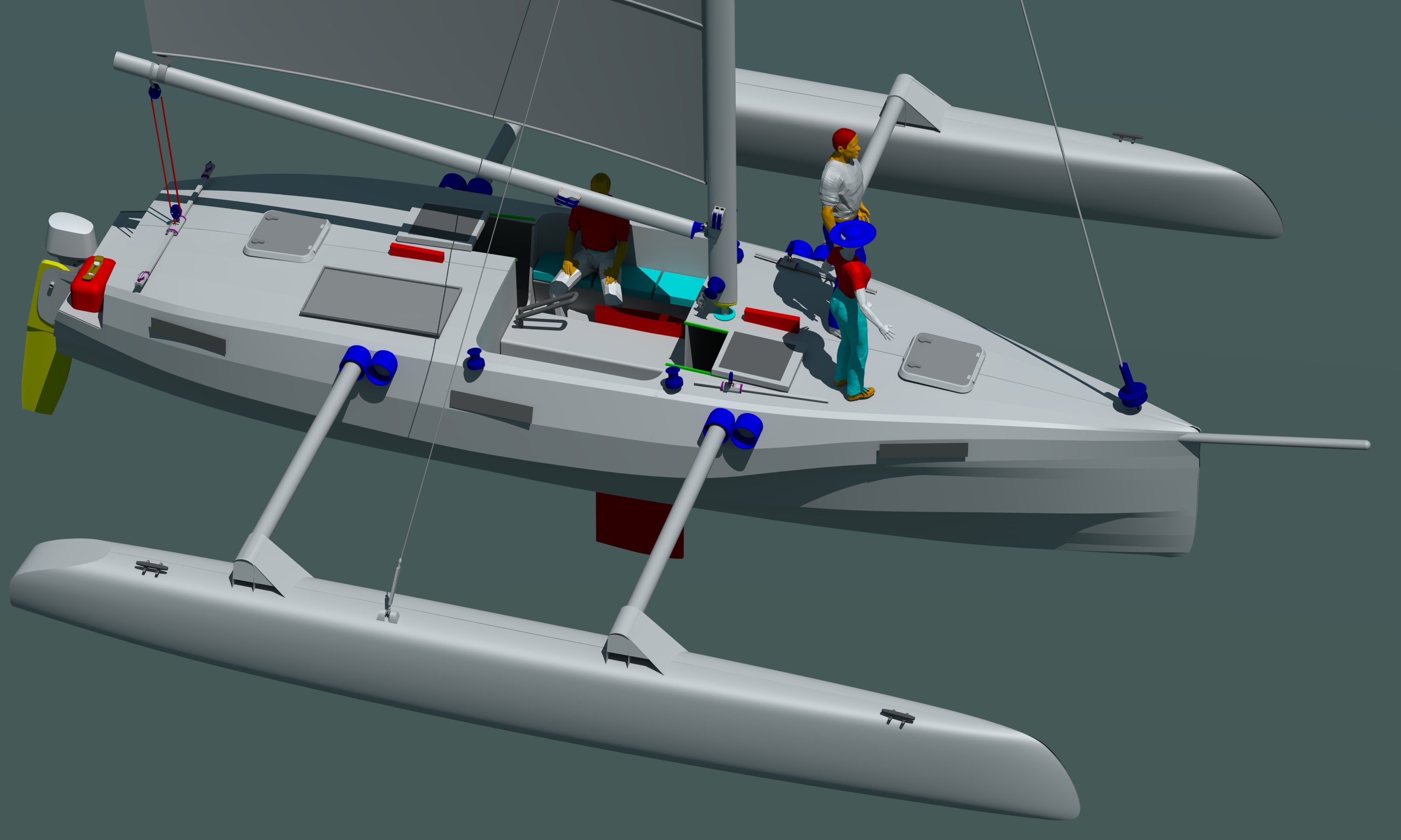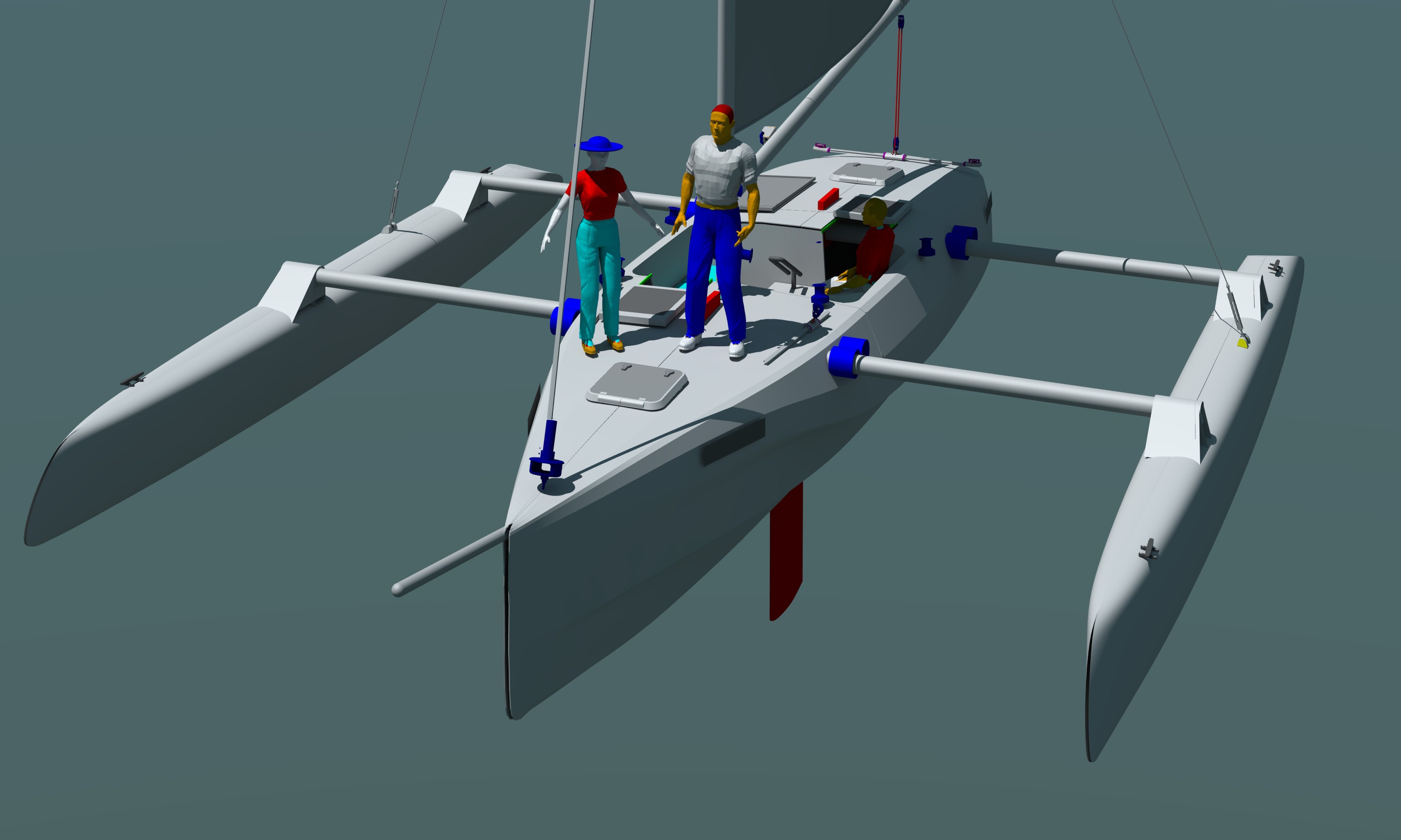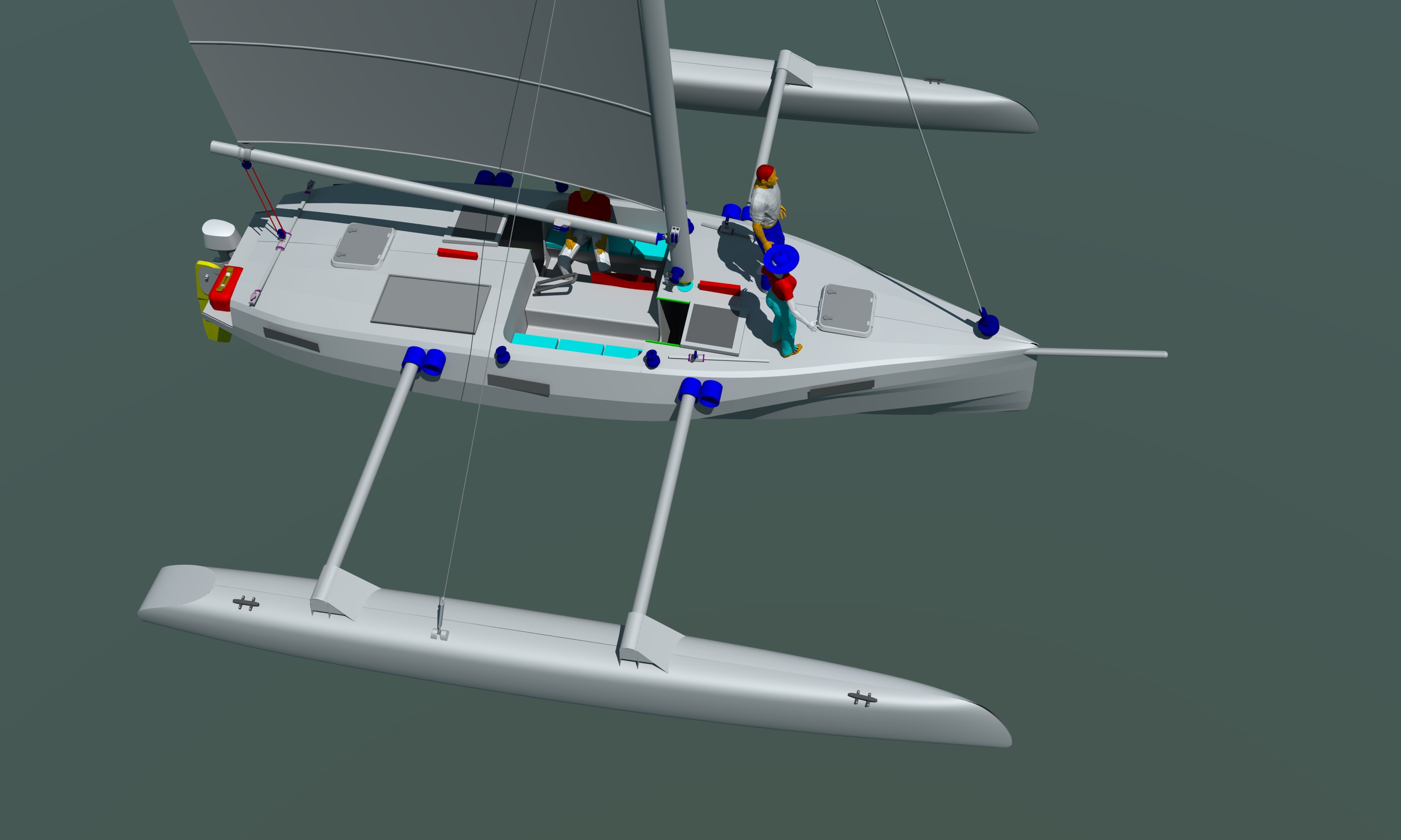I can’t believe that I have been lured into designing a new millennium searunner. A custom design where the design requirements eventually became center cockpit over any others. I, and most other designers, rejected center cockpit as it takes up the biggest part of an already too skinny main hull. Ply/epoxy. For the wooden boat festival.
Added more items, lowered the boom, photovoltaic, and added people. And the in position. Customer has been friend for 30 years. I have not even thought about plans. Just enough for his wooden boat festival presentation. I just noticed that the seastays vanished in this Luxology rendering method. They are there.
Plywood flat panel construction main with core as needed. Amas in CM developed plywood. Amas and tubes slide in for mooring in a marina.






Think I’ll rename the boat scarph after i’m done><! That looks like a happy compromise between exotic molding and flat panels
This new version of the Searunner 31 solves one of the biggest problems for us , it gets skinny!! Like it!
Now how to deal with tubes in the hull , if located as conveniently as possible this is a winner design …
We have D32 plans, like this one better…
no, is still tough deal. there is no actual space for head. the tunnel takes up so much space. Widest part of the main hull is only for storage and tunnel. aft cross tube really intrudes in galley. I will be looking at more if is funded.
the most important criterion seemed to become have mid cockpit like Searunner. I’m not nostalgic. We will see how it evolves.
This new version of the Searunner 31 solves one of the biggest problems for us , it gets skinny!! Like it!
Now how to deal with tubes in the hull , if located as conveniently as possible this is a winner design …
We have D32 plans, like this one better…
Oh, and the final motor mount on Scrimshaw was featured in Chris White’s book. What a miracle of engineering that was!
Jim said he originally had a 4hp ish motor on the boat, and it very nearly let them down on a few occasions. The Yan 9.9 with all the controls from the cockpit that he finally fitted was a perfect solution.
my 31/34 foot tri Smoholla was happy for years with 4 hp.
Put me down for one!
The center cockpit is a good design in many respects. In short boats like the 23, the bow doesn’t scoot up in the air, and make difficulties with tacking; you get two compartments that are able to accommodate at least one person, rather than trying to place two people head to toe in a pipe. I always joke that my 7 foot tender has a better berth than my 24×18.5 foot trimaran. which is true.
My 23 almost “sank” when water in a short sea started to pump up into the interior, and filled the boat. A center cockpit is self draining and the perfect placement for a daggerboard, as there is no overhead ceiling .
The center cockpit arrangement is very secure with kids on the boat, though on my 23, one certainly can’t fault the security of the cockpit and nets.
I can’t speak about the pros and cons on larger boats except to say that I was on Jim’s Scrimshaw for an evening sail, and it seems a really great layout. It means something that it is the cockpit position he chose for his own boat.
And of course, for small racing boats, the Newick 32 foot Vals amassed a fairly impressive record in the early OSTARS. Newick returned to the center cockpit over and over in his cruising and racing boats, that were smaller in size: Tremolino; Val; Arganauta; B2… I have plans for a boat like Argonauta that Newick designed but I had never heard of, so he may have others that were commissioned.
not opposed to center cockpit but that is the widest part of a skinny main hull. the main sail is the big power engine. I prefer just looking up instead of backwards.
Interesting. Would you please, elaborate what is the purpose/benefit of the center cockpit? And how would the inside dimensions work out?
Will that be a stitch and glue main hull then?
the hull is. your repair might be more scarph and glue.